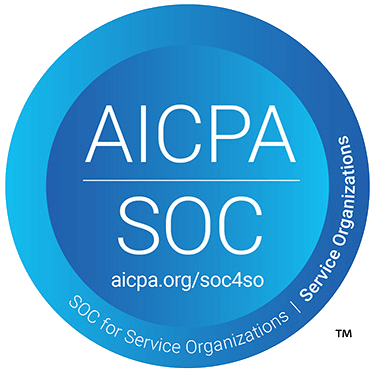Tax season is here and it’s about to get real. 2020 was perhaps the most unpredictable year of our lifetimes. As a tax pro, you should get ready to tackle unforeseen circumstances and have creative solutions in your back pocket to help when your client owes IRS money. Here’s your IRS for tax pros guide:
Time is of the Essence
Remind your clients that if they are not going to file on time, that they should at least file an Application for Automatic Extension (Form 4868) to avoid a Failure to File penalty if there is a on a balance due. The Failure to File Penalty is 5% per month for up to 5 months. For clients already working with an accepted Offer in Compromise, failure to file on time may result in a default to the agreement, resulting in a demand to pay their back-owed taxes in full again. Additionally, if your client is in an installment agreement and does not file or has a balance due, failure to take action may default that instalment agreement.
Utilize Templates to Expedite the Process
Help move things quickly by prepping taxpayers right from the start. IRS Solutions has template letters you can utilize to send emails and reminders to your clients quickly and easily.
Marketing Toolbox Resources:
-
- Remote Filing Email: An email regarding virtual tax prep that explains what clients can expect from “remote filing” this tax season. Allows your clients to upload documents through the client portal.
- Tax Appointment Reminder Email: Text to place in automated or manual appointment reminder emails
- Tax Appointment Checklist: Send this checklist to clients before their tax appointment.
- Check-In Email: Text to place in follow-up emails for your clients
Notice Response Templates:
Your clients will bring notices in to you as soon as a challenge arises with the IRS. IRS Solutions Software makes it really easy to look up specific notice numbers with the search functionality. Just type in a notice that the taxpayer receives to find it within seconds.
-
-
- CP2000: This notice is one of the most common notices for tax adjustment. Your client will need your assistance to verify the details to ensure the IRS is correct with their calculations.
- Penalty Abatement Request: This is another commonly used template. It is a request for the IRS to waive penalties from failure-to-file and failure-to-pay circumstances.
-
Remember the Following When Dealing with the IRS
- The Credentials You Need (or Don’t Need) for Tax Resolution Might Surprise You
As long as your client is present and authorizes you to speak to the IRS to negotiate on their behalf you are able to provide tax resolution help even as an Unenrolled Return Preparer. This extends to help with installment agreements, IRS Offer in Compromise, Currently Not Collectable status and even audits - When Dealing with the IRS, Your Client Needs to Catch Up on All Returns First
Before you can assist with making an agreement with the IRS on behalf of your client, you may need to catch up and file all years before they will make a payment agreement. Remember, this could come with additional surprises: this is why it is so important to charge a one-time exploratory discovery cost upfront. The more tax resolution cases you manage the more value you offer your clients. This means you can also charge more for your fees the longer you have been solving cases.
ProTip: Speed up the research/discovery process by utilizing IRS Solutions to download transcripts in minutes instead of hours. Let the system calculate the best solution for you. - No One Expects You to Reinvent the Wheel
Do your research and find out which payment solution works best for your client. But don’t be surprised if these are the three payment solutions you use most frequently:- Installment Agreements – for clients looking to pay off tax debt over time
- Offer In Compromise (OIC) – for clients wishing to pay a reduced lump sum due to hardship
- Currently Not Collectable (CNC) – for clients with little or minimal assets
- You Will Need to Explain Penalties to Your Clients
- Failure-to-File and Failure-to-Pay Penalties: Filing a tax return after tax day or an agreed-upon extension date can result in a Failure to File penalty on a balance due. The Failure to File Penalty is up to 5% per month for a maximum of 5 months. This amount is reduced by the amount you owe for the failure-to-pay penalty. The maximum amount of this penalty is 25% of your unpaid taxes. The maximum amount for the Failure to pay penalty is 22.5% and the failure to file penalty is 22.5%
- Defaulting on an Offer: One of the things your client is agreeing to when applying for an Offer in Compromise, is that they will meet all payment and filing requirements for the next 5 years. Remind your clients about the importance of compliance. If money is owed for a tax year and not paid, the client will default on the agreement and will owe all of the money again. You as the Tax Pro have the ability to renegotiate with the IRS should any challenges arise, so encourage clients to keep open communication with you during the process.
- Penalty Abatement (Don’t Forget this Option): Taxpayers have the option to file for a penalty waiver. If the penalty abatement request is approved, the IRS may grant relief to taxpayers from failure-to-file or failure-to-pay if certain criteria are met.
Get Support From IRS Solutions
Our Client Portal comes with everything you need to streamline your workflow and alleviate the pressures of dealing with the IRS. Not only that, but our Marketing Toolbox gives you the resources to promote your business to new and existing clients. For example, use the “My Services Letter” to inform leads about the many services you offer. Print out our customizable “How I Can Help” pamphlet from the Marketing Toolbox and include it in a client’s onboarding paperwork. IRS Solutions is more than a tax resolution software; we’re a built-in support system giving you all the tools necessary to make the most of your time, maximize profit, and do the best job for your clients. Not a member yet? Join us today.








